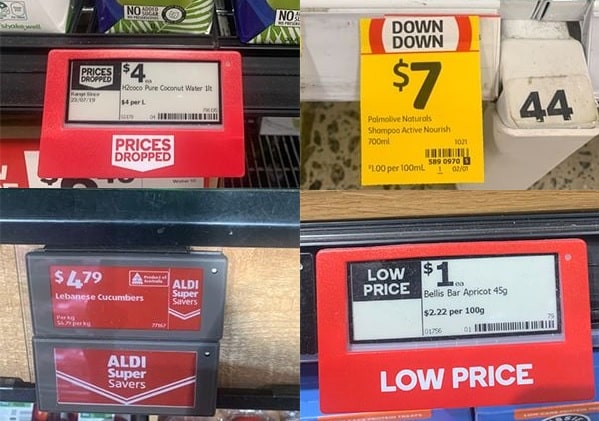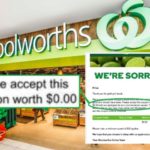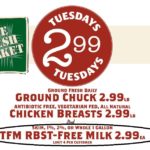
Kroger has been known to print price tags with bold red numbers on a yellow background, suggesting to the casual shopper that the items are on sale when they’re not. Publix often advertises items as having a “surprisingly low price” when the surprise is that the price is the same as it always is.
So how can you be sure if an item that appears to be on sale, actually is?
If you’ve been confused by misleading price label language, you’re not alone. It’s happening to shoppers on the other side of the world as well.
The Australian consumer group CHOICE surveyed shoppers, using real-world examples of local grocery store price tags, to see if they could determine from the price tag terminology whether the items were being sold at a discount or not. And it turns out some of the labels Down Under are just as confusing as they are here.
Just look at some of the examples pictured above, that CHOICE gathered. Does “prices dropped” mean that particular item’s price has dropped? Is a “super savers” item actually saving you any money? Is “low price” a lower price than normal? And what the heck does “down down” even mean?
“The range of language used to describe what appears to be a sale can make it tough to work out if a discount is actually on offer,” CHOICE explained in a report about its results. “What we found was widespread confusion among customers. Many customers incorrectly thought that certain items were on discount when they weren’t, while many simply said they weren’t sure.”
One out of four shoppers had a hard time figuring out if the price tags they were shown represented an actual discount. Some were more confusing than others. And many shoppers were surprised to find that price tags that seemed to suggest an item was on sale, actually did no such thing.
In one example, CHOICE showed shoppers an item with a shelf label reading “prices dropped.” 19% of shoppers thought it was a discount, while 23% said they weren’t sure. CHOICE asked the grocery store, and was told “the price had actually dropped, but way back in 2019. So the current promotion was for a discount that was applied about five years earlier.”
Other price tags had the label “low price” or “member’s price,” but both “lacked information about how it differed from the regular price.” The label “down down” was among the most confusing, with more than half of shoppers unsure or incorrect about whether it meant a discounted price (it didn’t). And with two-thirds of shoppers misinterpreting a price marked “while supplies last,” that was the most confusing label – even to CHOICE itself. “Even after asking,” CHOICE representative Rosie Thomas told the Australian newspaper, the organization itself “still doesn’t know if this is a discount or not.”
“People are sick of feeling tricked” by misleading shelf labels, CHOICE senior campaigns and policy adviser Bea Sherwood said in a statement. “None of the supermarkets we spoke to for this story acknowledged the harm that these confusing labels are causing. It is clear we can’t rely on the supermarkets to do right by consumers.”
CHOICE is calling for stronger oversight around how prices are displayed in stores, including which terms and which colors can be used, so as not to confuse shoppers into thinking they’re getting a deal when they’re not. The group has started an online petition calling on the federal government to “force supermarkets to make grocery pricing fair and transparent.”
So if you’ve ever been confused by grocery price tags, and misled into thinking you’re getting a discount, watch to see how Australia handles this. If they can do away with “super savers” and “down down” – maybe there’s hope American price tags can start making more sense, too.
Images source: CHOICE















